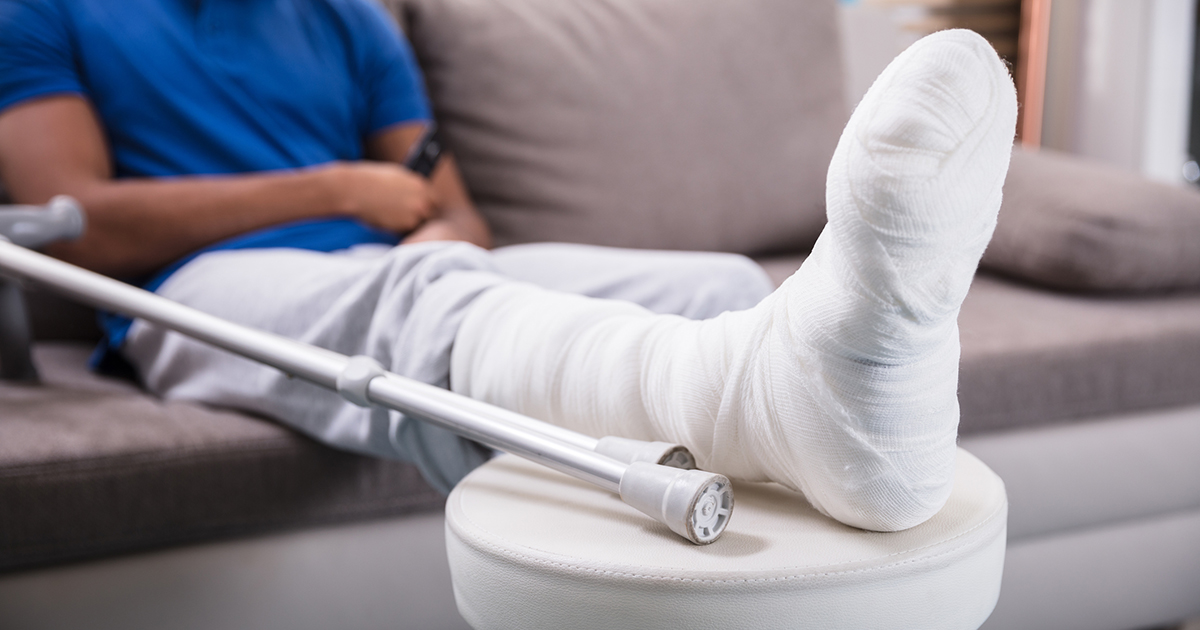Guide To Recovering From A Fractured Ankle
Ankle injuries are one of the most common injuries, and their incidence rate is increasing both with the increased activity level of baby boomers as well as the competitive aspect of sports. Easy twisting motions, with the body going one way and the foot and ankle turning the opposite way, and direct trauma such as steep falls or car accidents, are the primary ways an ankle is injured. Ankle fractures occur when one of three bones that comprise the ankle crack or fail, allowing a disruption in bone. The ankle joint is formed by the two lower leg bones, the tibia and fibula, and the foot bone that sits between them, the talus. Learn how to recover from a fractured ankle now.
Keep The Ankle Elevated

First and foremost, patients should keep the ankle elevated above their heart, as this will decrease both swelling and pain. The leg primarily relies on the pumping action of the leg muscles to return blood to the heart. When an individual isn't walking properly, or not at all, this process stops. Blood is then allowed to pool in the leg along the lines of gravity. This pooling of blood slows healing, increases pain, and increases the risk of complications such as blood clots. Proper circulation optimizes healing by enabling the influx of necessary oxygen and nutrients to assist in the injury repair.
Reveal the next aspect of recovering from a fractured ankle now.
Stay Off The Injured Ankle

Ankle fractures are typically quite painful, so it may be easy to stay off the injured ankle, as most of the time it causes too much pain to walk. Attempting to push through the pain is not a good option if a fractured ankle is suspected. Additional damage may occur, causing instability or complicating recovery and healing. Ankle fractures are best defined by where the fracture occurs in the bone, but also how many of the ankle bones are involved in the fracture. The more bones involved, the less stable the ankle fracture becomes. Walking on it puts stress on the bones that do not have a fracture as well as the soft tissue structures such as ligaments and tendons, putting patients at risk for further injury.
Continue reading to learn about the next piece of advice for recovering from a fractured ankle now.
Apply Cold Compresses

It is often confusing whether hot or cold therapy should be used for an injury. A generalization of this confusing situation is to use cold compresses for acute injuries and swelling, while hot compresses are best used for muscle aches and arthritic stiffness. It is typical to see swelling and soft tissue damage with an ankle fracture. Individuals should be sure to apply cold compresses as soon as possible to reduce swelling, pain, and bruising. They should apply cold compresses for fifteen to twenty minutes before removing and allowing the skin to return to a normal temperature, which typically takes twenty to forty minutes, before reapplying the compress. Patients should never apply ice or cold packs directly to the skin as this is likely to increase tissue breakdown. They should have a cloth between the ice and the skin instead.
Get the details on the next way to recover from a fractured ankle now.
Splint Or Cast The Injury

Ankle fractures require proper evaluation by a medical professional, typically an orthopedic surgeon or an emergency room physician. Fractured ankles are typically not possible to diagnose without radiographic imaging such as an x-ray, MRI or CT scan. Only a highly trained professional should determine whether to splint or cast the injury after proper physical evaluation and imaging. Stable ankle fractures, typically those involving one bone and select impact, can be completely healed with the use of a cast or splint. While a medical professional may make the process seem simple, the technique, the cast or splint used greatly impacts healing. Improper alignment of the fracture results in inadequate healing and is likely to inhibit a return to full function.
Learn more about recovering from a fractured ankle effectively now.
Surgical Intervention

Not all fractured ankles will properly heal with the above treatments alone. These more complex fractures require surgical intervention, which may involve plates, screws, and pins, or may be as simple as an arthroscopic procedure to evaluate the area inside the joint. Ankle fractures that involve disruption to more than one bone, potentially all three, are more likely than singular fractures to require surgery. Surgeries to repair fractured ankles should always be performed by a reputable orthopedic surgeon. Most are performed quickly, with little to no required hospital stay. Ankle fractures should always be evaluated by appropriate medical personnel to maximize healing of an ankle fracture while optimizing full recovery.